|
Indicator's third, and for now at least, final box set* of lesser-seen Hammer films is a curious and slightly problematic one. The issue lies in part in the theme that bonds the four films included in this set, which has its roots in Britain's colonial past and used to manifest itself in tales in which dastardly foreigners were up to no good in far-away lands and would probably go unpunished were it not for the stout efforts of white British men of military standing. Two of the films are set in Burma during World War 2 and deal with Japanese war crimes, whilst the other two are set further back in time in what were once British colonies, where long-standing local threats are finally confronted only because they directly impact on the colonial whites.
Now I should point out that there is nothing particularly unusual in such tales, and many a fine film has been forged from this albeit parochial viewpoint. The problem here lies in how the people of these distant lands are presented. In one film, the Japanese are demonised to an almost cartoon-like level, and in three of them the non-British characters are played by occidental actors in sometimes comically ineffective makeup. Yes, this was not uncommon in its day and yes, a studio of Hammer's limited resources probably had trouble locating actual Chinese, Japanese or Indian actors back in the late 1950s or early 60s, and we do have to make allowances for that. And when it nearly comes off, as in The Stranglers of Bombay, it's easy to turn a blind eye and get caught up in the story. But when it completely misfires, as with the dizzyingly unconvincing fake Chinese of The Terror of the Tongs, I was constantly reminded that I was watching an artificial creation, which repeatedly pulled me out of the film. The notable exception is Yesterday's Enemy, which sidesteps these issues and is actually bold and forward-looking in the sincerity and intelligence of its anti-war sentiments.
And so, to the films themselves.
| THE CAMP ON BLOOD ISLAND (1958) |
|
It's been suggested to me that because my partner is Japanese and because I have such a love for Japan and its culture, I tend to be more critical of how the Japanese are portrayed in western movies than I am of the citizens of other nations. It's a valid point, but I'd also suggest that if this is the case, then it's only because I've had considerably more exposure to Japan, its people and its culture than I have to other countries and cultures, my own excepted, and seeing entire nations and their citizens demonised or portrayed as cartoon stereotypes irks me whatever the race. But yes, I guess I am more sensitive to the issue when the Japanese are the target. I am, however, not blind to the atrocities committed by Japanese forces during WW2 in the name their Emperor, but if you're going to portray this on screen, then it makes sense to do so with honesty and realism and not exploit the suffering of prisoners-of-war for entertainment purposes.
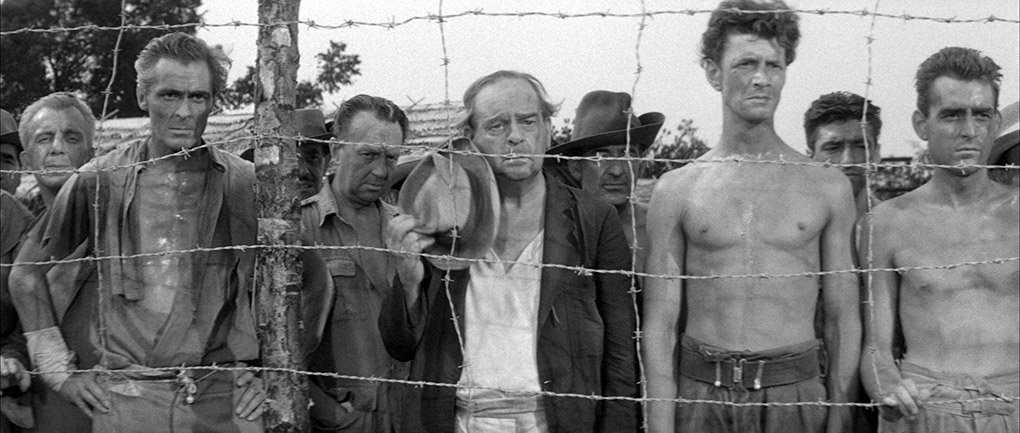
The brutal treatment of POWs in Japanese prisoner-of-war camps has been the basis of a number of wartime dramas, the most famous and highly regarded of which is probably David Lean's 1957 The Bridge on the River Kwai. Despite its reputation and its very real qualities as a gripping film drama, it did make a few notable changes to the true-life figures on which key characters are based. Actual camp commander Maj. Risaburo Saito, for example, was regarded as one of the most humane of Japanese officers, while British commander Lieutenant Colonel Philip Toosey, on whom Alec Guinness's Lieutenant Colonel Nicholson was loosely modelled, did not collaborate with the Japanese but instead made repeated attempts to sabotage the bridge that his men were forced to construct. But at least the principal Japanese characters were played by Japanese actors and not western actors made up to somehow look Japanese, a ploy that never convinced and today is usually painful to watch. Remember Marlon Brando and his pantomime Japanese accent and makeup in Teahouse of the August Moon? I just had one of those "someone walked over my grave" style shudders at the recollection.
In the 1958 The Camp on Blood Island, the key Japanese characters are about as Japanese as Elmer Fudd. Leading the pack is Calcutta-born Hammer irregular Marne Maitland, who features in three of the films in this set, each time as a character from a different ethnic background. As an actor who was adept at sinister roles (he's particularly good as 'The Malay' in Hammer's 1966 The Reptile), he must have on paper seemed ideal casting as the sadistic Captain Sakamura, yet he never feels convincingly Japanese, blessed as he is with a high-pitched, clipped delivery that plays more like comical caricature than impersonation, and a nose that might well have inspired statues in ancient Greece but in Japan might well be the subject of anthropological study. Mind you, he's actually given a serious run for his money by Ronald Radd as camp commander Yamamitsu, who looks and sounds less like a disciplined Japanese officer than a disgruntled British builder on a break between jobs. We even get to watch Hammer stalwart Michael Ripper cartoon it up as a cheery Japanese driver who amuses himself by offering a cigarette to his British passenger and then tossing it away. What a comedian.
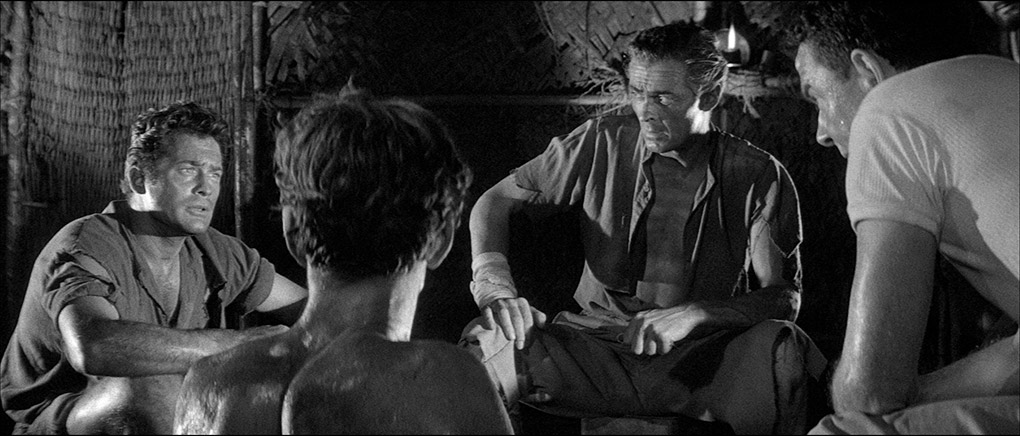
All of which is a bit of a shame, as there is a solid premise at the heart of the film, which takes place in a Japanese prisoner-of-war camp in Burma in 1945, one run along uncompromisingly brutal lines by camp commander Yamamitsu and his first officer, Captain Sakamura. Thanks to a radio hidden in the latrine, British commanding officer Colonel Lambert has discovered that the war is over, but knows that if the news reaches Yamamitsu, then all of the prisoners will be killed and the camp will be razed to the ground. Lambert and his men are thus caught in a quandary by news that should theoretically free them but if revealed will almost definitely result in their demise. Neat, huh? But there's more. There's also a women's camp a short drive away, to which male camp Padre Paul Anjou is intermittently driven to deliver a burial service when one or more of the female prisoners dies and uses the opportunity to smuggle messages to the women hidden in Latin incantations that only British prisoner Mary Beattie (whose husband is in the male camp) can understand. Indeed, you're left with a sense that there's a whole other story to be told about what's happening in the women's camp, which we visit only fleetingly when someone dies, an escaped prisoner (played by an emaciated-looking Richard Wordsworth) whose wife is being held there is returned, and when we catch a teasing glimpse of a sub-story involving a prisoner who trades sexual favours with a guard for rations.**
On the allied side at least, a fine cast is on consistently good form, notably Hammer regular André Morrell, who is typically authoritative as Colonel Lambert. He is ably supported by down-to-earth performances from Michael Goodliffe as Father Anjou and Edward Underdown and Major Dawes, and fresh from his role in Jules Dassin's Rififi, Carl Möhner is most engaging as Dutch prisoner and camp saboteur Piet van Elst. Comparatively small though their roles may be, Barbara Shelley and Mary Merrall also make an impression as Kate Keiller and Helen Beattie over in the women's camp, and you're left wishing we could have seen more of their story. There some solid direction from Val Guest, whose sterling work on The Quatermass Experiment was key to Hammer's subsequent rebranding as the world's premiere producer of cinematic horror, his semi-documentary approach visible here in the low-key handling and the decision not to subtitle the spoken Japanese. Just occasionally this lack of dramatic overstatement really helps to ramp up the tension, but this air of authenticity does occasionally slip. Later, the weakened British prisoners throw grenades with the accuracy and timing of world-class baseball pitchers, and at one point a Japanese soldier is run over by a mining cart because he just stands there looking terrified until it reaches and hits him (Austin Powers, anyone?).
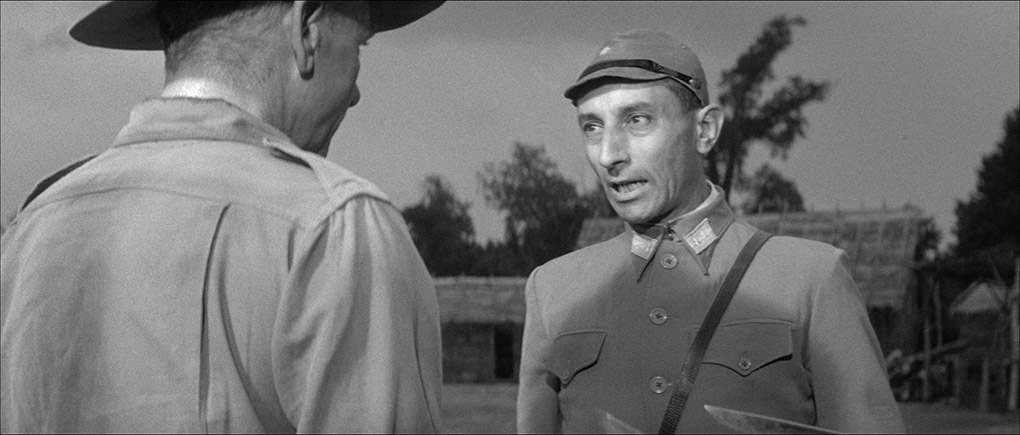
So what's the problem? Well, as I stated in my opening paragraph, I have no issue with the cinematic depiction of Japanese military brutality during World War 2, which was sometimes appalling and should certainly not be sugar-coated or excused. But when the Japanese are presented as pantomime villains played by obviously western actors in dodgy makeup, any air of authenticity created by the otherwise well-judged performances and direction is hopelessly undermined, casting the Japanese collectively as a monster as unrelentingly evil and sadistic as any you'll find in the studio's more widely celebrated horror works. There's not even a whiff of nuance to this crucial aspect of this otherwise solidly made and acted work, a disregard for subtlety most starkly illustrated by the film's original poster, whose image of a muscular, sword-wielding Japanese soldier (played by Bombay-born wrestler Milton Reid) could almost have been lifted from one of those propagandist (and unapologetically racist) anti-Japanese wartime posters and comics. And when you're dealing with a subject as serious as Japanese war crimes and the mistreatment of prisoners during World War 2, it needs to be presented in a manner that an audience can take seriously and possibly even learn from. I struggled on this front, but when I screened if for my Japanese viewing companion, just a couple of minutes in she let out a peal of laughter, pointed at poor old Marne Maitland and cried out incredulously, "Is he supposed to be Japanese?" and was unable to stop giggling from that point on. Intermittently entertaining and an interesting barometer of attitudes of its day it may be, but Merry Christmas Mr. Lawrence it most definitely ain't.
Right from the off, there's a strong sense that Yesterday's Enemy is going to be a different kettle of fish to The Camp on Blood Island, despite being also set in Burma during World War 2 and directed by Val Guest. Here there are no sadistic comic-book Japanese officers, and for the first half the Japanese are an almost invisible foe, a well-organised threat to the survival of the battered remnants of a British Army Brigade that is lost in dense jungle and trying to make its way to allied lines. Its commander is wounded and being carried on a stretcher by men who are now almost too weak for the task, and leading them in his place is the ruthlessly driven Captain Langford (Stanley Baker), who is determined to push ahead in spite of pleas from his men that they be allowed to rest. When they do stumble across what looks to be a neutral village, they are ambushed by Japanese soldiers hidden in the huts. They mount an effective counter attack and take control of the village, which they plan to use as a temporary base, but when a Burmese civilian who was working with the Japanese is captured and claims to know nothing of enemy plans, Langford takes extreme measures to force him to talk.
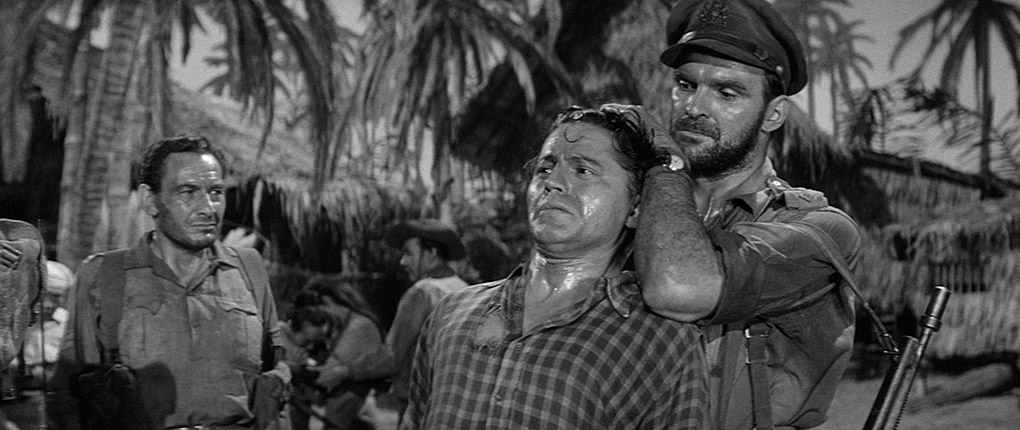
It's here that we're presented with our first real moral quandary, as Langford's conviction that a marked map left by the Japanese is of strategic importance and that the Burmese informer has the information he needs prompts him to commit a serious war crime in the belief that the end will justify the means. Some of his men, notably his loyal second-in-command Sergeant McKenzie (Gordon Jackson), are supportive of his actions, whilst the company Padre (Guy Rolfe) and war correspondent Max (a typically excellent but perhaps slightly too well-fed looking Leo McKern), strongly protest them. What's interesting, and ultimately challenging, about this pivotal moment is that the film allows both sides to present their case, then seems to be coming down on Langford's side. As pastor and war correspondent, both protestors are non-combatants and are movie-favourite objectors to actions they theoretically have no first-hand experience of, and they are promptly accused of hypocrisy by Langford for not being as outraged when civilians are killed by bombs dropped from allied planes. And when Langford's actions have the hoped-for results and the informant spills the beans, there's a discomforting sense that the film is sanctioning behaviour that a few years later would rightly provoke public outrage during the Vietnam War.
But all is not what it seems here, and as the battle with terrain-familiar Japanese troops intensifies and starts to take its toll on Langford's rapidly dwindling company, the survivors find themselves at the mercy of a Japanese officer who is willing to commit a similar war crime to the one perpetrated by Langford in order to extract crucial information from him. This places Langford in the same position as the Burmese informant, switching his role from perpetrator to victim and prompting us to ponder on whether our judgement of what constitutes a war crime is based at least partly on just who is committing the act in question, and for what purpose.
It is noted several times in the extra features that Yesterday's Enemy came about partly as a response to the negative critical reaction to The Camp on Blood Island. Based on a controversial BBC TV play, it ditches the earlier film's propagandist viewpoint and racial stereotyping in favour of something considerably more thoughtful and layered. It's a film that asks some serious and pertinent questions about the manner in which wars are fought, and by allowing both sides to air their views, it pulls off the rare feat of delivering an ultimately anti-war message without ever coming across as a preachy polemic. We know that the actions Langford takes are morally indefensible, yet he argues his case with such fierce conviction that we are genuinely given momentary pause for thought. As played by a typically excellent Stanley Baker, Langford is not portrayed as a monster but a ruthlessly determined officer who will do whatever he believes is necessary to defeat the enemy and ensure the survival of men he has no personal bond with but whom he has dedicated his life to lead and protect. His status is enhanced by the likeability of his loyal second-in-command, Sergeant McKenzie (a first-rate Gordon Jackson, repeating his role from the TV original), and the willingness of his men to follow orders that they may personally dislike simply because they have faith in his leadership. But the arguments made by Max and the Padre are equally persuasive and are ultimately borne out when the tables are turned and the instigators of this action have to face the prospect of being the victims of it.
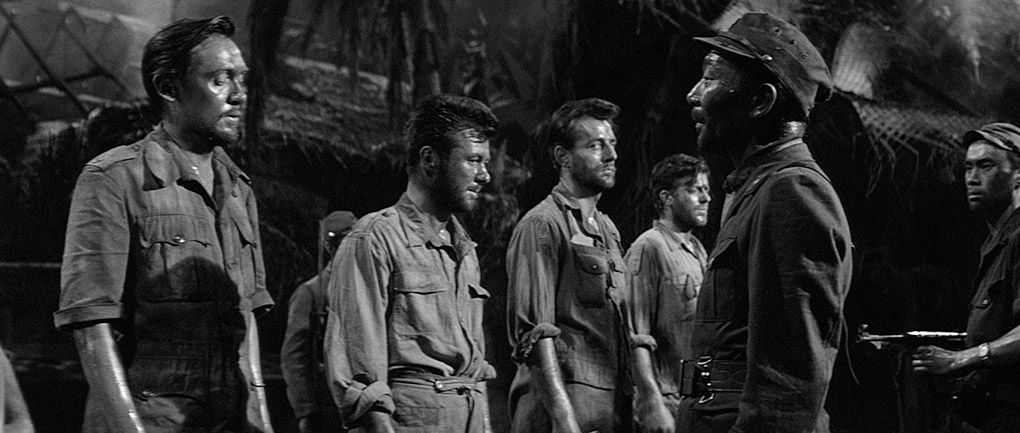
There is none of the cartoon villainy of Camp on Blood Island, and the Japanese are her presented as a professional fighting force, one as determined and capable as its British equivalent and more at home in a location in which its enemy struggles. In the first two thirds, as the Japanese troops open fire on the British as they approach the village or silently outflank them in the surrounding jungle, I was reminded of Sam Fuller's 1951 Fixed Bayonets!, in which Korean enemy soldiers are not demonised but portrayed instead as a well organised and determined army regulars. Yesterday's Enemy diverges further from Blood Island when the surviving British are captured by the Japanese and Langford is confronted by their commander Yamazaki (a terrific performance from Korean-American actor Philip Ahn, who later achieved worldwide fame as the young Kwai Chang Caine's teacher in the TV series Kung Fu), whose eloquent command of English and considered conversation almost make Langford sound stubbornly blunt by comparison.
Director Val Guest's documentary approach is at its most effective here, from the overlapping dialogue and low-key performances to a complete absence of music, with silence and the sounds of the jungle used instead to ramp up tension and create a palpable sense of threatening isolation. He's aided by some superb production design from Hammer regular Bernard Robinson, whose modular sets enabled Guest and his cameraman Arthur Grant to create a convincing sense of a large and dense Burmese jungle without ever having to leave the studio. The result is not just the finest film in this box set, but one of Hammer's most progressive, thoughtful and boldly realised non-horror works, and without question one of the strongest but curiously undervalued anti-war films of the 1960s, and beyond.
| THE STRANGLERS OF BOMBAY (1959) |
|
In 1829 India, a delegation of traders meets with Colonel Henderson (Andrew Cruickshank) of the ruling East India Trading Company to complain that people and caravans of goods are disappearing in alarming numbers, a concern shared by British officer Captain Harry Lewis (Guy Rolfe), who has devoted his spare time to cataloguing such incidents. Henderson agrees that something needs to be done and that an expert in these matters should be appointed to the role, but instead of selecting Lewis, he recruits Captain Christopher Connaught-Smith (Allan Cuthbertson), a self-absorbed upper-class ponce who only lands the job because his father went to public school with Henderson. While Connaught-Smith bumbles around getting absolutely nowhere and arrogantly dismissing all evidence brought to his attention, Lewis carries out his own investigation and discovers that the disappearances are the result of attacks by a secret cult of stranglers who worship the goddess Kali.
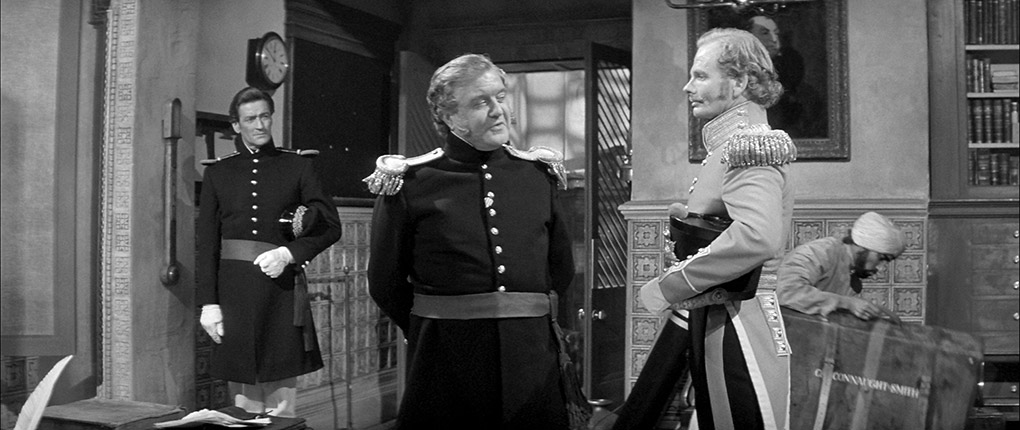
At first glance, The Stranglers of Bombay may seem like another example a Hammer film in which a colourful wickedness has been invented to create a threat that is both menacing and foreign, a genre trope that dates back to Transylvanian vampires and continues to flourish in the more modern horror cinema of Hostel and its ilk. Yet in common with several of the studio's more outlandish-sounding tales, this one has its roots in historical fact. The secret but widespread cult of the title did indeed exist, its members did worship the goddess Kali and they did rob and murder travellers by strangling them. They were also targeted for eradication by a British civil servant, one William Henry Sleeman, on whom Lewis was loosely based and who is directly referenced in the film's closing caption. This basis in fact also helps to make sense of an aspect of the closing caption that can otherwise seem to have an oddly sensationalist edge, where the stranglers are repeatedly referred to as thugs, a word which is underlined every time it appears. Yet this is no tabloid headline style condemnation of their actions but a simple statement of fact, as it is from these very criminals, who were known as Thuggees, that the word 'thug' originates.
While it seems certain that the project came about because Hammer were looking for another distantly exotic threat to base a film around due to the unexpected commercial success of The Camp on Blood Island, at least some of the locals here do appear to have been cast with their ethnicity in mind. That's not to say that all are Indian in origin (the High Priest of Kali is played by Cypriot-born George Pastell and his assistant Bundar by Roger Delgado, a British actor of Spanish-French parentage who later achieved fame as The Master in Dr. Who), but they're still considerably more plausible than Blood Island's Japanese. And while the endlessly adaptable Marne Maitland makes his second appearance in this box set, here his casting as Indian trading spokesman Patel Shari is wholly appropriate, given that the actor was born in Calcutta.
The knowledge that this was loosely based on a true story helps diffuse that small but still nagging discomfort that comes with watching any film in which a 'civilised' white man comes along to sort out troublesome foreign locals and long-standing issue that is not acted upon until it impacts on British trade. This is balanced further by the pompous stupidity of Captain Connaught-Smith and the fact that we get to care about some of the Thuggees' victims, including Lewis's houseboy, Ram Das. Mind you, it would be a cold-hearted bastard who had no sympathy for the Thuggees who are punished for failure by having their eyes and tongues burnt out, and are then kept in cages until the time comes for them to be ritually strangled.
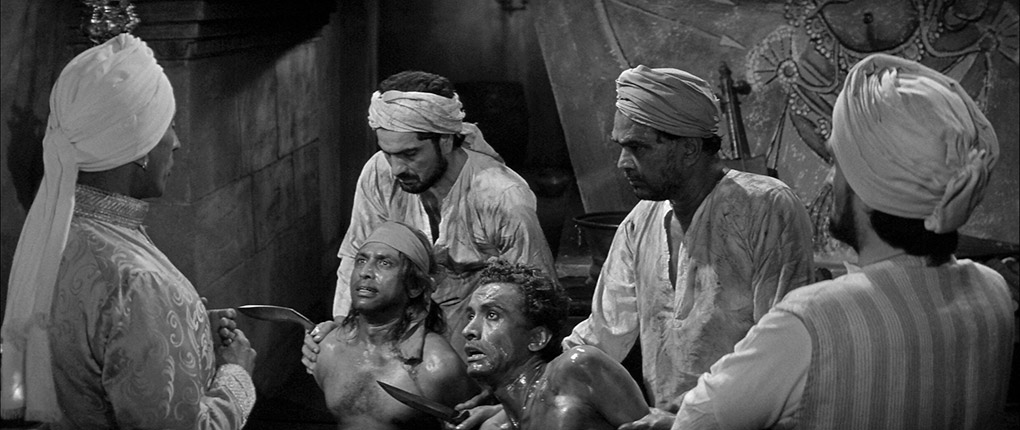
We're teased for some time by a title and an opening scenes that promise dastardly deeds that are a long time coming, but the road to ritual murder is peppered with interesting exchanges and some small but amusing pokes at the British class system, which is particularly impressive given that the screenwriter David Zelag Goodman is American by birth. He also comments slyly on the dangers of religious fundamentalism and delivers a short but still oh-so-relevant commentary on how prejudicial attitudes can grow from differences in religion or class – when Lewis is looking for information on the missing Ram Das and questions the locals, his attempts to elicit their help by suggesting that Ram Das is one of them, to which one man responds, "I am a merchant, and he is a servant," while another says contemptuously, "He is not our kind – I am Muslim and he is Hindu."
The violence when it comes is largely hidden from view but is nasty by implication, and Hammer maestro Terence Fisher keeps things moving at a brisk pace, aided by a characteristically energetic score from studio favourite James Bernard. While solidly entertaining and generally satisfying, not everything clicks. A pet mongoose comes to Lewis's aid with such unlikely timing and frequency that I started referring to it as mongoose ex machina, and I'm not sold on the idea that the real-life Thuggees would have treated the silk scarves they use to strangle their victims as sacred objects (research suggests that they sometimes used rope nooses). I was also initially mystified by the presence of sole female Karim (Marie Devereux) in the Thuggees' camp, as she only seems to be there to display her eye-popping cleavage for the camera and become visibly turned on when anyone is tortured or killed. It took Alan Barnes in the accompanying documentary to wise me up to the idea that she could be a physical incarnation of the goddess Kali, and if so her every appearance suddenly makes complete sense. Nice one, Mr. Barnes.
| THE TERROR OF THE TONGS (1961) |
|
In 1910 Hong Kong, Chinese diplomat Mr. Ming (Burt Kwouk) is murdered when a man buries an axe in his chest just seconds after he has disembarked from his ship. Particularly shocked by the incident is ship's captain Jackson Sale (Geoffrey Toone), with whom Ming regularly dined on the voyage that transported them both to Hong Kong. Sale is unaware that Ming has hidden a message in a book that he presented to Sale to give to his daughter Helena (Barbara Brown), one that contains vital information for an underground group that is opposed to the Red Dragon Tong, a powerful Chinese gangster organisation that controls the city's underworld. When Helena is murdered by Tong agents searching for the smuggled message, Sale becomes determined to expose the gang and bring down its leader, Chung King (Christopher Lee).
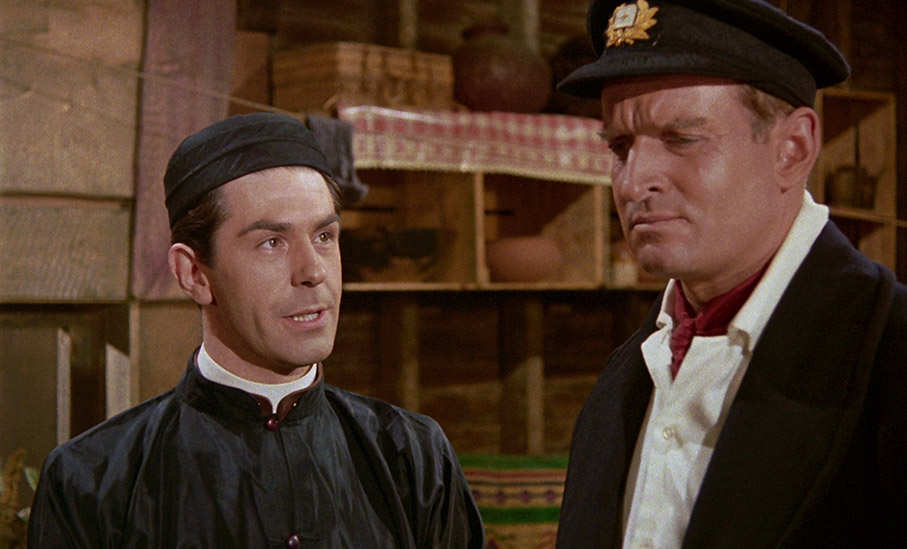
If the casting of Caucasian actors in oriental roles proved a barrier to engagement in The Camp on Blood Island, in The Terror of the Tongs it's a Trumpian ego-sized wall. As Red Dragon Tong leader Chung King, Christopher Lee gets the full evil oriental makeup job in what plays as a trial run for his Fu Manchu films for Hammer, though is still betrayed somewhat by his 6'5" frame, his instantly recognisable basso voice and his perfect English diction. Elsewhere we're asked to accept obviously Caucasian actors as Chinese based on nothing more than the clothes they are wearing. Thus we have courtesans in Chung King's lair who look like they've been kidnapped from a Sussex nightclub, a wise woman named Maya (Marie Burke) who has the appearance of an old English auntie (albeit one with an East European heritage if her accent is anything to go by), and Tong members who are so obviously non-Chinese that I began to suspect they were there as part of an exchange programme with their gangland equivalent in East London of the day. And our old friend Marne Maitland is back as the leader of the revolutionary group looking to topple the Tongs, a role that does play well to his acting talents, despite the fact he is as convincingly Chinese here as he was as a Japanese officer in The Camp on Blood Island.
And then we have Lee (the character, not Christopher), who as well as not looking remotely Chinese delivers all her lines with a distinct French accent, hardly surprising since she's played by Yvonne Monlaur, was born in France and spent her early film career appearing exclusively in French and Italian productions. As a character, Lee had the potential to be an interesting barometer of changing social attitudes of the time, but this is tempered by the underlying conservatism of the British film industry of the day. Thus, the romantic relationship that develops between her and Sale could be seen as genuinely progressive for a British film made in 1961 is she was actually Chinese and not every bit as Caucasian as the object of her overly fawning affections. Thus we have a love affair that is interracial in theory only – it's almost as if the filmmakers were sympathetic to the concept but did not have the nerve to realise it on screen, believing that their target audience was not ready to cheer for an Englishman falling for Chinese girl. They even have Lee briefly mention that she is actually a half-caste in the hope of explaining away her very western looks and accent, but also, perhaps, to assure more intolerant (or should that be racist?) audience members that it's okay for these two to snog each other because Lee is not really Chinese after all. I like to think we've come a long way since then. Adding to my discomfort here (big spoiler ahead, so skip to the next paragraph if you want to avoid it) is the late film decision to have Lee sacrifice her life for Sale, effectively quashing any audience concerns that this racially transgressive duo might one day choose to live as man and wife. Yeah, you could say I'm a little sensitive to such matters.

Even more so than with The Camp on Blood Island, this all gets in the way of what would otherwise be a decent enough romp, one that skips along at a brisk pace courtesy of actor-turned-director Anthony Bushell, boasts gorgeous colour cinematography and production design from studio regulars Arthur Grant and Bernard Robinson respectively, and another typically lively James Bernard score. There's also a good deal to recommend in Jimmy Sangster's screenplay, even if some of the best lines are delivered by Chinese characters who seem to have a more poetic command of English than their supposedly educated British counterparts. Consider this lovely threat delivered by Chung King to Sale after he has been caught meddling in Tong affairs: "You surely didn't expect anything else, Captain? One plays with fire, one must expect to be burnt, the severity of the burn being governed by the strength of the fire. And you have chosen to play with a very large fire indeed." And while the violence is largely restricted to post-attack weapons buried into the flesh of their victims (the attack on Sale's daughter Helena has clearly been trimmed by censorial scissors), the very notion of a torture called 'bone scraping' and the pained responses of its unfortunate victim should get you sucking air through your teeth.
The transfers on all four discs in this set were sourced from HD remasters by Sony and all look terrific. The Camp on Blood Island, Yesterday's Enemy and The Stranglers of Bombay were all shot in scope and in black and white, and all have been transferred in their original 2.35:1 aspect ratio. The contrast and sharpness are impressive on all three, with solid black levels, no burn-outs on highlights and a fine level of picture detail. There is a very slight drop in quality and print cleanliness during the sequence in which a mongoose fights a cobra in The Stranglers of Bombay, but this is because the footage was sourced from an Indian documentary, and probably enlarged to fill the scope frame. The Terror of the Tongs is framed 1.66:1 and was shot on Eastmancolor stock and it looks utterly lovely here, having the sharpest detail of any film in the set and consistently vibrant colour reproduction that really showcases Bernard Robinson's lush production design. All four films are clean of damage and clear of dust and there's no hint of jitter in frame.
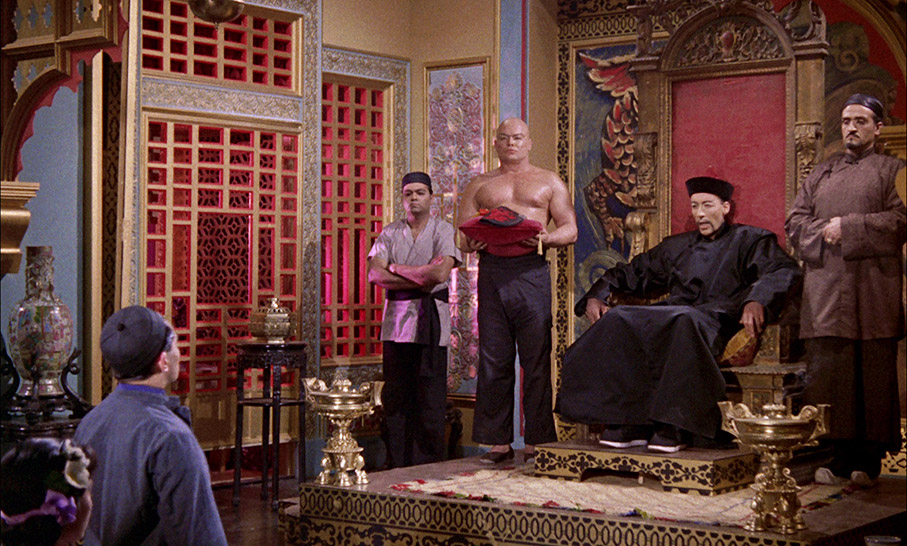
All of the films have Linear PCM 1.0 mono soundtracks and all are in good shape, with clear reproduction dialogue, effects and music and no trace of background hiss or other sundry damage.
Optional English subtitles are available for all four films.
The Camp on Blood Island
Audio Commentary with Barbara Shelley and Stephen Laws
An initially one-sided chat with actor Barbara Shelley, who openly admits that being an elderly stroke survivor has slowed her up a little and initially lets Laws do most of the talking. But as the conversation continues she becomes livelier as she shares memories of working with Christopher Lee, Peter Cushing, Spike Milligan ("a joy"), George Sanders and more. Although technically as a commentary, The Camp on Blood Island is only briefly discussed, but I personally have no problem with that.
The Brutal Truth: Inside 'The Camp on Blood Island' (25:51)
The first of four engaging and stylistically similar featurettes in this box set, all of which are directed by Marcus Hearne, narrated by Claire Louise Amias and are built around interviews with The Hammer Story co-author Alan Barnes and English Gothic author Jonathan Rigby. Areas covered here include the genesis of the film, the BBFC's response to the script and the finished product, the cast, director Val Guest's documentary approach, the controversial poster artwork (which was banned in London), the hostile critical response, the box-office success and more. And yes, the film's presentation of the Japanese as crudely drawn pantomime villains is acknowledged and addressed.
Hammer's Women: Mary Merrall (10:22)
The venerable Kat Ellinger delivers a typically learned and interesting appreciation of actor Mary Merrall, whose role in the film is small but memorable and whose lively private life we know just enough about to wish we knew more.
From Light to Dark (17:42)
Director of the Cinema and Television History Centre, Steve Chibnall, delivers a useful overview of director Val Guest's career, up to and with particular emphasis on the development, shooting and marketing of The Camp on Blood Island. I was especially intrigued to learn that the film crew faked the Burma location in Berkshire in part by peppering the background with moveable palm trees shipped in for the purpose, a similar trick to one pulled off some years later to transform London Docklands into Vietnam for Stanley Kubrick's Full Metal Jacket. It was also here that I learned the film was (unsurprisingly) not shown in Japan because it was considered defamatory to the Japanese nation.
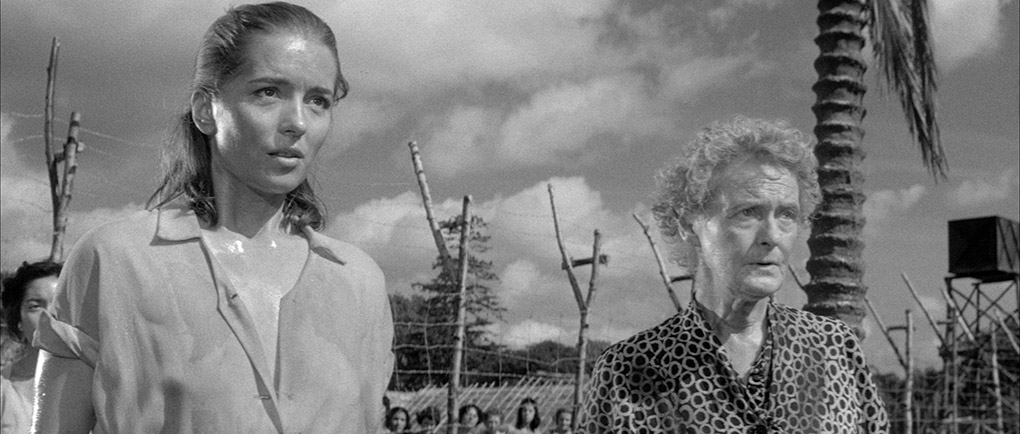
Return to Blood Island (3:28)
A brief interview with the film's replacement continuity supervisor Renée Glynne, who recalls her working relationships with Anthony Hinds and Val Guest while she battles to keep control of a restless dog.
Theatrical Trailer (2:10)
"It's barbaric! It's brutal! But this is how it was!" scream the angular text captions in a trailer that really hammers home the idea that the Japanese were unspeakable monsters, describing camp commander Yamamitsu as a homicidal maniac and the film as "the strangest and most terrifying story in all the history of man's inhumanity to man."
Image Gallery
56 slides of promotional photos, posters and other press material, including some horribly coloured front-of-house images.
Booklet
Following the usual full credits and cast list, we have an unsurprisingly thoughtful essay on the film by Kim Newman, extracts from interviews with director Val Guest and his work for Hammer, examples from Columbia's exploitative US marketing campaign, extracts from the novelisation ghost-written by Gordon Thomas and Arthur Kent, and extracts from three contemporary reviews, which are unsurprisingly critical. The booklet is illustrated with promotional stills and imagery.
Yesterday's Enemy
When you elect to watch the film you are offered the option to play the US or the UK theatrical versions. On the surface, the differences are purely cosmetic (the American version opens with the Columbia logo, the British with the original BBFC certification card), but since posting this review I've been advised that on the American print, four uses of the word "bastard(s)" have been overdubbed. Thanks once again to Michael Brooke for pointing this out. The Guardian Interview with Val Guest (45:37)
Conducted by Jonathan Rigby, this on-stage interview with Val Guest was recorded at the National Film Theatre on 12 May 2005 following a screening of his 1960 crime thriller Hell is a City, where some of the film reels were shown in the wrong order. How embarrassing. Despite being just a few days away from his 94th birthday, Guest is a sprightly and highly entertaining interviewee, recalling his early work as a comedy writer for Will Hay ("a very clever fellow") and Arthur Askey ("we all have our penance"), hassling his way into his first directing job, meeting his future wife in unexpectedly exalted company, and more. He has a fun story about being pranked by Alfred Hitchcock and getting him back big time, and another about bets taken by the film crew over what ailment Will Hay would arrive at work complaining about each day. This is an audio-only extra that plays under the film, and it's hugely enjoyable.
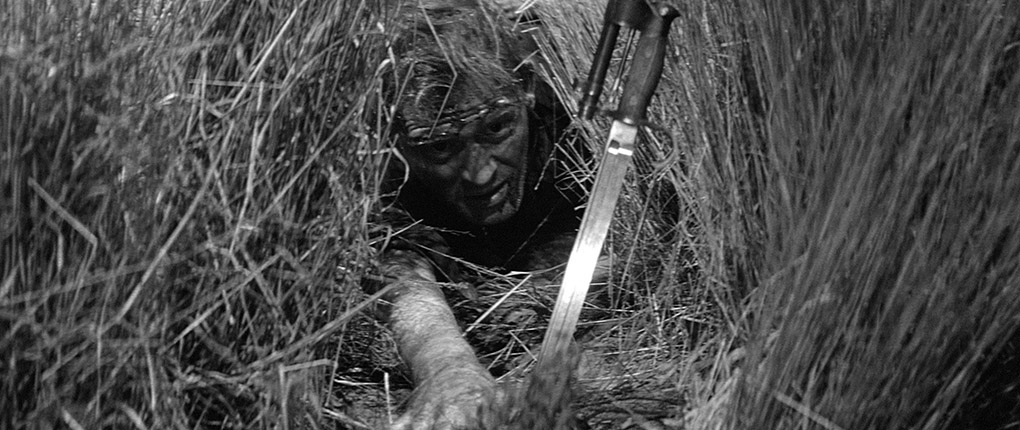
Total War: Inside 'Yesterday's Enemy' (24:43)
Barnes and Rigby return to deliver a comprehensive evaluation of a film they clearly both admire, discussing project's origins as a BBC TV play, details of the production and the impressive cast, as well as highlighting the specific qualities that director Val Guest brought to the production. Comparisons are drawn to the more crudely exploitative The Camp on Blood Island, and while that earlier film was effectively banned in Japan, we're informed that Yesterday's Enemy had its world premiere in Tokyo and was something of a hit with Japanese audiences.
Hammer's Women: Edwina Carroll (7:56)
Becky Booth provides a concise look at the career of actor Edwina Carroll, who has a key supporting role in Yesterday's Enemy as the only English-speaking Burmese villager, and who has a key line of dialogue about the similarity of behaviour between the British and Japanese.
Introduction by Stephen Laws (8:06)
Horror novelist and lifelong Hammer movie fan Stephen Laws delivers an enthusiastic appreciation of a film he regards as "the greatest British anti-war ever made," discussing the cast, the production design, the documentary feel and more.
New Territory (12:53)
Steve Chibnall provides a thoughtful and detailed examination and appreciation of the film, covering its conception, Bernard Robinson's ingenious production design, the critical response, the lack of a music score, the air of social realism, and more.
Frontline Dispatches (8:08)
The film's second assistant director Hugh Harlow and floor props chargehand (how many of you know precisely what that is?) Peter Allchorne share their memories of working on Yesterday's Enemy. Harlow talks about the modular jungle set and Val Guest's personal work ethic, whilst Allchorne has a story about Stanley Baker's disorganisation when it came to props.
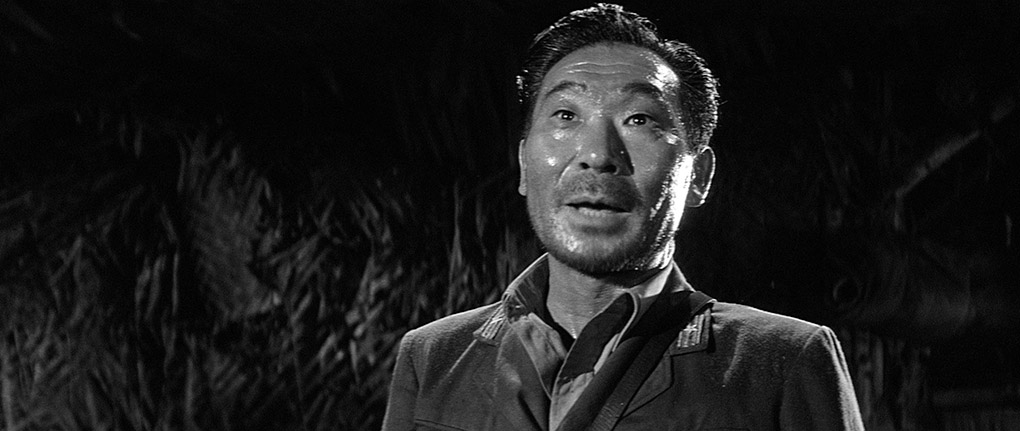
Theatrical Trailer (2:44)
A solid enough trailer that's surprisingly up-front about the film's content. It's introduced by war correspondent Bob Considine, who testifies to the film's authenticity and suggests that "if they ever want to make a more meaningful war picture than Yesterday's Enemy, well then they'll have to fire live ammunition from the screen." Just as well William Castle never heard him say that.
Image Gallery
130 slides of promo still, posters (including the Japanese one), coloured FOH stills, press book scans, all immaculate quality
Booklet
The lead essay here is a well-reasoned look at the film's considerable merits by Neil Mitchell, which is followed by extracts from the Hammer-produced souvenir brochure in the shape of glowing testimonials from actual Burma campaign veterans. Up next are extracts from interviews in which Val Guest talks about the making of the film, short archival interviews with producer Michael Carreras and screenwriter Peter R. Newman, snippets about key cast members from the UK campaign book, and an extract from the novelisation by Maurice Moiseiwitsch, which apparently differs substantially in tone from the film. Finally, there are a number of contemporary reviews, including one from The Observer of the original TV version.
The Stranglers of Bombay
Three separate cuts of the film are available here, the US theatrical release, the UK theatrical release and what has been titled the Integral Version. Both the US and the UK versions have been slightly censored but in different ways, the British print for violence and the American print for sexually suggestive imagery. The Integral Print has been specially assembled to include all of the footage from both films and thus represents the nearest you're going to get to a fully uncut version. That's definitely the one to go for if you're new to the film.
Audio Commentary with Screenwriter David Z. Goodman
The film's American screenwriter, David Z. Goodman, divides his time between commenting on the movie and discussing his career in general. He's not above criticising his own work, claiming that one early scene as overlong and overwritten and that what's really missing from the film is a good subplot. He does, however, praise its production values, and remarks that it's a thrill to see it after all these years. His passion for cinema really comes across here, and he does touch on his screenplays for more widely celebrated works, including Straw Dogs, Logan's Run and Farewell, My Lovely.
Hammer's Women: Jan Holden (5:32)
Colette Balmain provides a brief biography of actor Jan Holden, who plays Captain Lewis's wife Mary in the film.
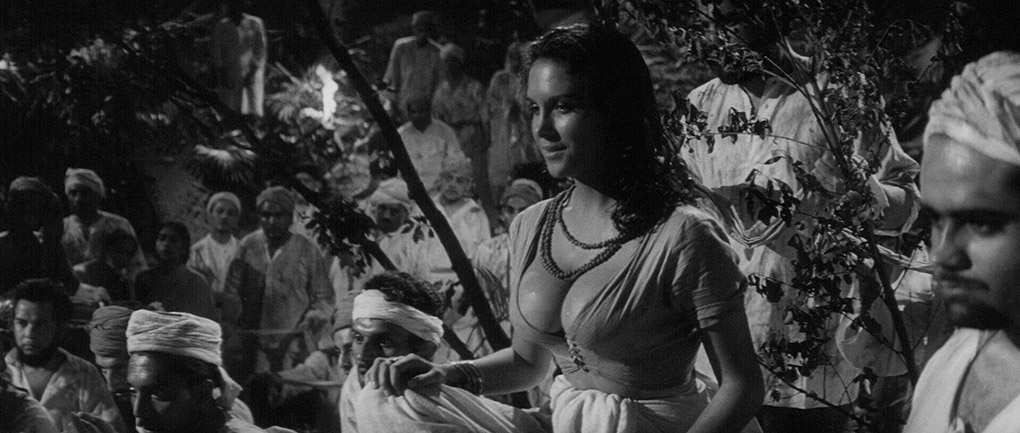
'The Stranglers of Bombay' and the Censor (26:56)
An interview with ex-BBFC examiner Richard Falcon, who explores the specifics of the cuts required by the BBFC in Britain and the MPAA in America, where violence was deemed acceptable but sex an absolute no-no, a puritan attitude that persists to this day and governs what you can and can't post on social media platforms.
About the Versions (6:35)
A really useful deconstruction of the differences between the differently censored American and British versions of the film, including the saddening news that footage that was excised from both editions has probably been lost forever.
Musical Orientalism (16:59)
David Huckvale, Indicator's go-to guy on Hammer film scores (his authored books include Hammer Film Scores and the Musical Avant-Garde) provides some information on composer James Bernard's background (he was born in India, where the film is set, and his father was the Colonel of a Gurkha regiment in the British Army) and fascinatingly breaks down elements of Bernard's score for the film.
Theatrical Trailer (2:02)
"This is true! This is real! This actually happened!" scream the captions on a trailer that actually uses the term Thuggees. It assures us that "No woman can resist, no man can survive their strangling silks" and reveals that the film was shot in 'Strangloscope'. A very likely story indeed.
Trailer Commentary with Brian Trenchard-Smith (3:50)
Filmmaker Brian Trenchard-Smith provides a brief but entertaining introduction to and commentary on the above-detailed trailer, and cannily notes that it pandered to "a taste in British audiences for tales of foreigners behaving badly, particularly if they were of a different hue."
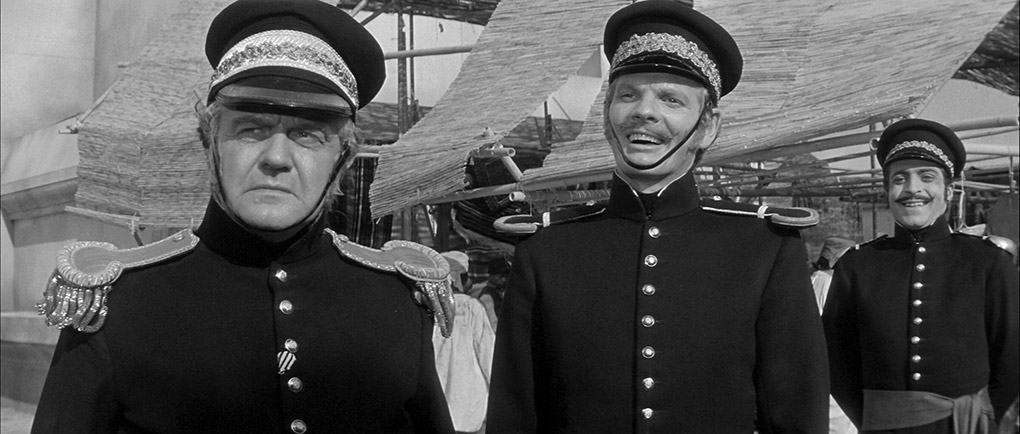
Image Gallery
47 slides of promotional images, posters, garishly coloured front-of-house stills and press book pages.
Booklet
After the usual full credits for the film we have a persuasive essay on the merits and guilty pleasures of the film by James Oliver; an intriguing piece by Kieran Foster on Hammer's unmade 'Dracula in India' project; a portrait of screenwriter David Zelag Goodman; a most useful essay on the real-life Thuggees (one more detailed than the essay from which I sourced the information for my review); extracts from the film's American press book; two brief excerpts from interviews with Hammer chairman James Carreras about the film; and short examples of critical reviews from the film's release, including a particularly hostile (and in one aspect, technically inaccurate) one from Monthly Film Bulletin.
The Terror of the Tongs
Audio Commentary with Jimmy Sangster, Chris Barnes and Marcus Hearn
A lively commentary featuring screenwriter Jimmy Sangster and Hammer devotees Chris Barnes and Marcus Herne that was recorded in 2007, presumably for a previous DVD release. Barnes and Hearne make some useful contributions here, including a quote from actor Burt Kwouk about his childhood exposure to real-life Tongs and remarks made by BBFC censors in regard to the film, but the principal interest lies in Sangster's contribution. There's a lot on Hammer's relationship and conflicts with the censors, but he also discusses other Hammer stalwarts, including Anthony Hinds, Michael Carreras and Anthony Nelson-Keys, as well as the preparations they regularly made to edit around possible censorship issues and the importance of the 3-act screenplay structure. He reveals that he watched the film recently and wasn't that impressed, and when questioned on the decision to have Chinese roles played by obviously western actors, his response is immediate: "I wrote it. I didn't cast it."
Hatchet Men: Inside 'The Terror of the Tongs' (21:30)
The final featurette featuring Alan Barnes, Jonathan Rigby and the voice of Claire Louise Amias focuses on the origin, making and merits or otherwise of The Terror of the Tongs. There's praise for the production design and Christopher Lee's performance, and useful information on the certification and censorial cuts, but the use of occidental actors in cod-Chinese makeup is soundly mocked, and Rigby goes as far as condemning Yvonne Monlaur's role as the love-struck Lee as "a nauseating, pathetic part." Indeed, he is largely dismissive of the film as a whole despite, as he succinctly puts it, "the usual qualities."
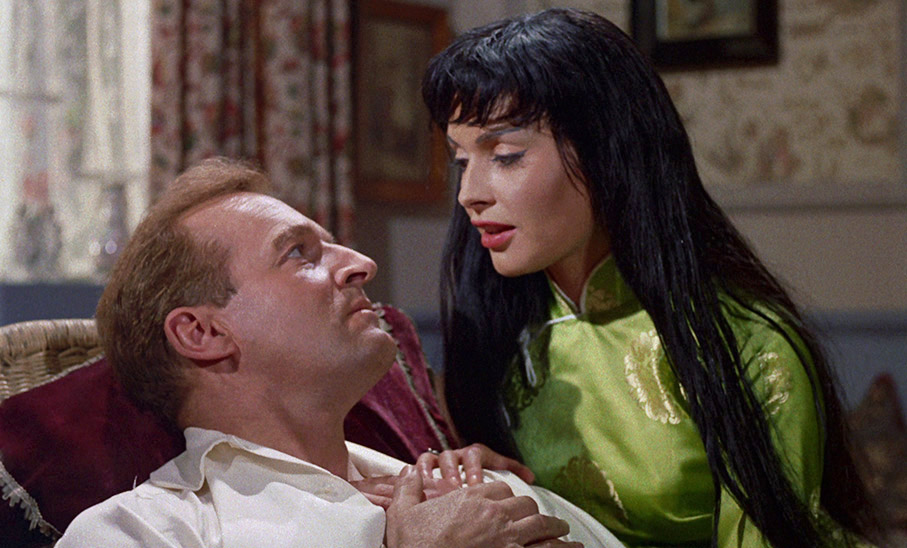
Hammer's Women: Yvonne Monlaur (6:02)
Laura Mayne, who can make you jump with her sudden bursts of what I presume is nervous laughter, provides an interesting look at the career of actor Yvonne Monlaur, and admits that her role as Lee is now painful to watch. She also suggests that while the film was peppered with talented actors, due to the constrictions of the eye prosthetics none of them were really able to act.
Introduction by Stephen Laws (8:03)
In a kick against the general consensus, horror novelist and long-time Hammer fan Stephen Laws enthusiastically sings the praises of what he regards as a magnificent film, though strategically steers clear of the central issue of casting western actors in Chinese parts and the unconvincing nature of some of the facial prosthetics. I'm largely with Jonathan Rigby on this one.
Hammer and Tongs (10:21)
David Huckvale provides a typically enthralling breakdown of James Bernard's work on Terror of the Tongs, which is particularly revealing for those of us with little or no musical talent.
Shear Terror (2:40)
A very brief chat with the film's assistant costume designer Yvonne Blake, who reveals that she designed only for the female characters and that she was not part of the crew but instead worked out of a costume shop that Hammer regularly employed.
Theatrical Trailer (2:30)
An explosively energetic trailer that promises violent mayhem and warns that the Tongs "ruled by force and fear." As do many governments, in their own way.
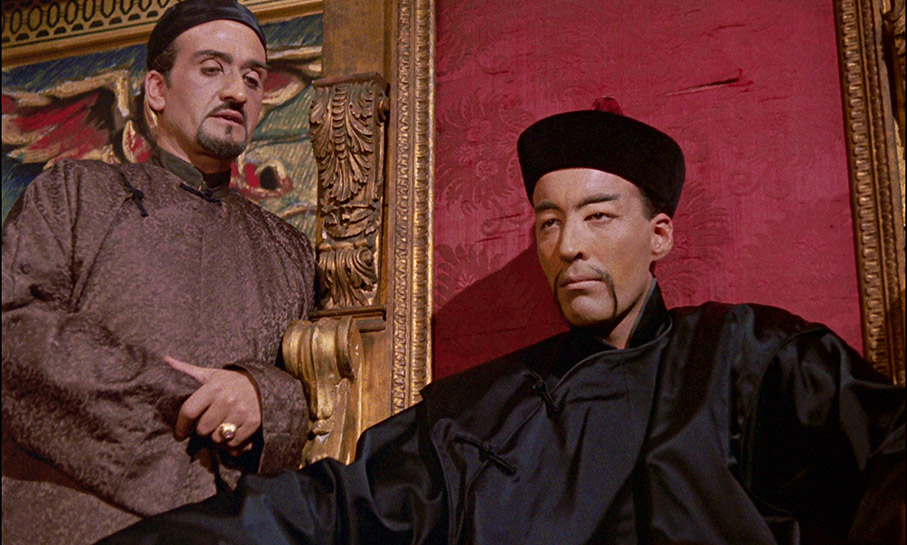
Image Gallery
54 slides of promotional stills, posters and press material.
Booklet
Opening as ever with the film credits, this booklet then moves on to detailed and authoritative essay of the film by Samm Deighan in which she draws some interesting comparisons with The Stranglers of Bombay and Sax Rohmer's Fu Manchu stories, some of which were later filmed by Hammer with an orientalised Christopher Lee in the lead role. This is followed by an a blog written by French actor Yvonne Monlaur about her experience working on Terror of the Tongs and extracts from screenwriter Jimmy Sangster's memoir, Inside Hammer, in which he talks about the film and his dissatisfaction with elements of it. As before, there are extracts from Columbia's press book and snippets from three contemporary reviews.
Another collection of little-seen Hammer movies that while not of the horror genre, do include their share of genre elements, something that doesn't always work in their favour. The issue of western actors made up to look Chinese or Japanese or Indian is one that opinions will differ on, particularly as we do have to contextualise these films to the time and place in which they were made, but it's impossible to ignore and for me really does get in the way of the storytelling at times. But all four films have their strengths and interesting elements, and Yesterday's Enemy was an absolute revelation that almost justifies the purchase of this box set on its own. The transfers are all excellent, and the special features are so good and so plentiful that they are once again a prime reason why this review is so late. For Hammer devotees, it's an absolute no-brainer, and while there are challengers there for the culturally sensitive viewer, this set still comes highly recommended.
* There have since been two more Hammer box sets from Indicator, and who knows if these will be the last?
** It's here that you'll find the only obvious example of a censorious cut, as one of the women calls her a "Jap slut," but if you watch her mouth she clearly says, "Jap whore."
|